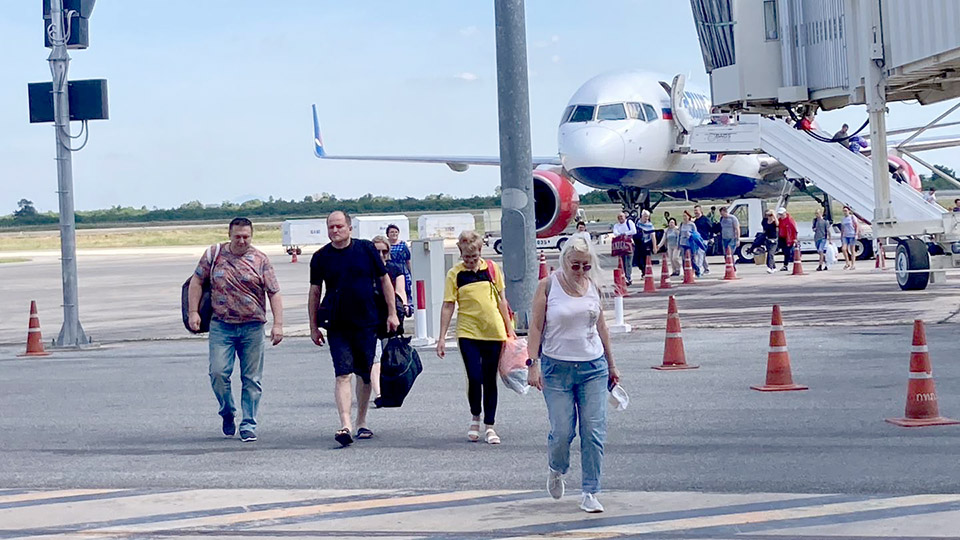
The demand for Russian flights to U-tapao airport, neighboring Pattaya, is being described as insatiable. Almost daily, Air Azov and Red Wings are now delivering 2,000-plus passengers on six charter flights from various Russian cities including Moscow, Novosibirsk, Krasnoyarsk and even Kazan which is the country’s fifth largest urban complex and situated by the Volga. These arrivals are on top of daily, multiple scheduled flights to Bangkok’s Suvarnabhumi airport.
Most Russians will return after their vacation, but a sizeable minority is here to stay as long as possible as retirees or entrepreneurs. Some younger men and those with families are evading conscription to fight in the Ukraine war, or seeking to settle as global expats. Pattaya immigration is deluged with requests from Russians for certificates of address to open bank accounts and apply for driving licences. Indeed, there is a standing half-joke that, within a few years, more Russians than Thais will own healthy Thai bank balances or own plush vehicles.
The Russian love affair with Pattaya goes back decades and annual arrivals almost touched 2 million before the pandemic struck in early 2020. Some believe that this figure has already been exceeded in the last twelve months. Welcome signs beckon in Russian in convenience stores in “Little Moscow”, a Naklua suburb near Pattaya: davai (take it) and deshyovyi (cheap). Thai tailors report a booming business in made-to-order clothes whilst the tills ring merrily in retail outlets from stylish malls to corner jewelry stores. Closed parties with champagne freely flowing are reported in several of the resort’s five star hotels.
Thailand Privilege, the owner of the Elite visa, reports intense interest amongst Russians for longstay visas from 5-20 years. The less affluent are renewing their immigration entry stamps by crowding the organized minibus trips to the Cambodian border where a further 45 days visa exempt is available the same day. “Russians don’t want temples and culture, they want sun and fun,” according to a Moscow tours representative. “Pattaya is our main business now,” she adds, “and we have clients who light their cigars with a 1,000 baht (US$30) note.”
Lining up next are the Chinese who are expected to pour into Pattaya once more flights are available and pending the opening of Chinese passport issuing offices, a service cancelled for almost three years of coronavirus. But the market is much bigger than short-visit tourists. Xiaohongshu, China’s answer to Instagram, is awash with the benefits of emigrating to Thailand where international schools are cheap and the latest generation longstay Thai visas, notably the 10-year Long Term Residence with its inbuilt work permit, is attracting lots of attention.
Some Chinese investors want the freedom to travel in and out of China at their discretion. They are already the biggest group of foreign buyers of property in Thailand, according to the Real Estate Information Center, with 3,500 units snapped up last year at an average price of US$150,000. In Pattaya, Chinese investors own at least half of all foreign-owned condominium flats. They don’t necessarily intend to live here: the idea is to rent them out. Almost 30 percent of all near-40 million foreign tourists in Thailand were Chinese nationals in 2019.
There has long been a debate about how Pattaya is changing and the prospects for neo (new) Pattaya in the post-pandemic world. The unprecedented surge in Russian and Chinese immigration – not simply tourism – will likely have titanic consequences not yet unfolded. They likely involve a continuing rise in the general cost of living as demand begins to exceed supply against a rapidly shrinking Thai workforce owing to a falling birthrate. Even more significantly, it is an open question whether Pattaya’s infrastructure, traffic routes and local government services can handle a surge of this proportion. The jury will be out a long time.

 |
 |
 |




